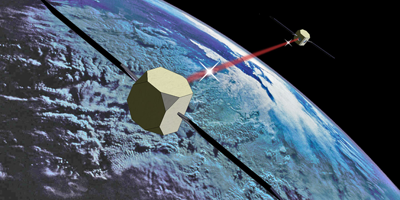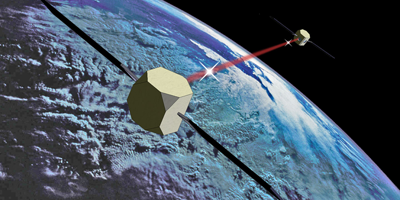Remove the Noise
General relativity predicts gravitational waves, but so far they have only been seen indirectly in astrophysical data. International collaborations seek direct evidence with enormous laser interferometers that detect phase shifts caused by gravitational waves, but the sensitivity is limited by laser noise. In Physical Review Letters, Peter Graham and colleagues at Stanford University suggest using the stability and precision of matter waves to ameliorate some of the problems with noise that vex existing experiments.
Atom interferometers can exceed the performance of previous methods by measuring accelerations of free-falling atoms at two locations to ascertain changes in spacetime. One laser is sufficient to probe both sets of falling atoms, so the effects of laser noise can be subtracted out. As the baseline grows to the needed length for gravitation measurements, however, the noise cancellation offers diminishing returns.
Instead, Graham et al. want to use photons to excite and de-excite the atoms, as well as to split and recombine the atom ensemble wave function. When the ensemble merges, the matter-wave interference fringes depend on how long the atoms in one arm stay in the excited state. In this setup, the atoms act as stopwatches that measure the transit time of the excitation and de-excitation laser pulses between the two locations. When a gravitational wave passes through, the light travel time oscillates. The effect is then measured by the atom interferometers, which sense how long the stopwatch atoms have been excited.
If experimentally feasible, the authors say that the proposal offers several advantages. Only a single baseline is needed, instead of two very long crossed interferometer arms. And the method only depends on the constancy of the speed of light, so laser stability has a negligible effect on the measurement. – David Voss





